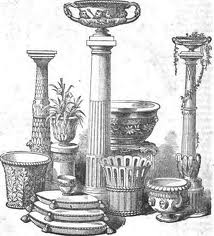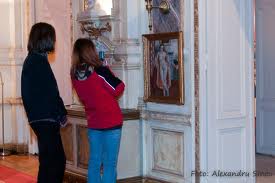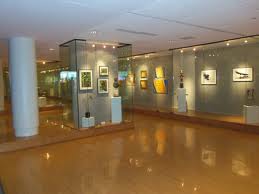Genurile artelor plastice

Ţin să mulţumesc realizatorilor unui alt site ce vizează domeniul artistic, de asemenea persoanei care se ocupă cu administrarea sa pentru acordarea permisiunii de a posta unele articole care vor contribui permanent la educarea noastră şi promovarea spiritului artistic. Invit de asemenea pe cei care vor citi acest articol spre navigarea pe site-ul http://www.moldovenii.md , deoarece vor găsi acolo o resursă bogată în privinţa domeniului nostru îndrăgit: Arta.
În continuare, redau un prim articol, cu referinţă asupra artelor plastice:
[Sursa Informativă:
http://www.moldovenii.md/section/90 ]
“Arta plastică, următoarele genuri, cunoscute ca arte majore (pictura, sculptura, grafica) şi minore, care se asociază cu artele decorative. La rîndul lor, fiecare gen are mai multe subdiviziuni, care vizează specificul tehnicii, materialul de bază utilizat şi subiectul reprezentat.
Pictura, de exemplu, se realizează în encaustică, temperă, ulei, acril, pe suport de lemn, pînză sau carton, în calitate de subiecte fiind selectate cele mai diverse teme – biblice, mitologice, istorice, cotidiene, care pot fi reprezentate ca tablou de gen, peisaj, portret, natură statică, cu sau fără prezenţă umană, redate tridimensional, creînd iluzia spaţială a imaginilor prin intermediul volumului, formei, clarobscurului, facturii, luminii şi umbrei etc.
Grafica, la rîndul său, apelează la motive similare, avînd însă alte materiale, forme şi tehnici, de la care, uneori provine şi denumirea subdiviziunilor – miniatură, acuarelă, pastel, gravură (desen, laviu, xilogravură, acvaforte, mezzotinto, linogravură), spre exemplu: gravura de carte sau cea de şevalet (stampa).
Sculptura este genul de artă care poate fi contemplată de jur-împrejur şi poate fi realizată prin cioplire (dăltuire) (granitul, marmura) sau turnare (bronzul,diferite aliaje metalice), constituind sculptura în rond-bosse (rotundă), relief şi altorelief, apelînd, de obicei, la un limbaj plastic specific – alegoric, simbolic sau comemorativ.
Artele decorative (ceramica, giuvaergeria, sticla artistică, tapiseria, batic-ul) au avut la începuturi doar funcţii utilitare (pentru păstrarea, transportarea şi utilizarea alimentelor, pentru protecţie) fiind decorate cu imagini sau ornamente decorative, devenind, cu timpul, obiecte estetice de lux, care înfrumuseţează ambianţa locuinţelor. Sunt cunoscute renumitele vase de ceramică greacă pictate cu figuri roşii şi negre, porţelanul şi batic-ul chinez, majolica italiană, tapiseria franceză şi cea germană.
Pictura şi sculptura mai au şi o altă formă de artă – arta monumentală, care este o simbioză a supradimensionării formei şi volumelor. Din această categorie face parte sculptura (statuile, statuile ecvestre, monumentele comemorative) şi pictura cu diverse tehnici în frescă, pictură murală, mozaic, vitraliu), realizate în proporţii şi forme considerabile.
În diverse perioade ale existenţei artelor plastice, operele, sunt atribuite, convenţional, unor stiluri şi tendinţe diverse, delimitate pe anumite intervale de timp şi regiuni (manierism, baroc, clasicism, academism, realism, romantism, impresionism, postimpresionism, abstracţionism, etc.), manifestîndu-se în cadrul tuturor genurilor de artă.
Operele de artă plastică sunt principalele obiective ale muzeelor şi colecţiilor de artă din toată lumea. “
[pentru articol, Drepturi Depline Rezervate © Moldovenii.md ]





